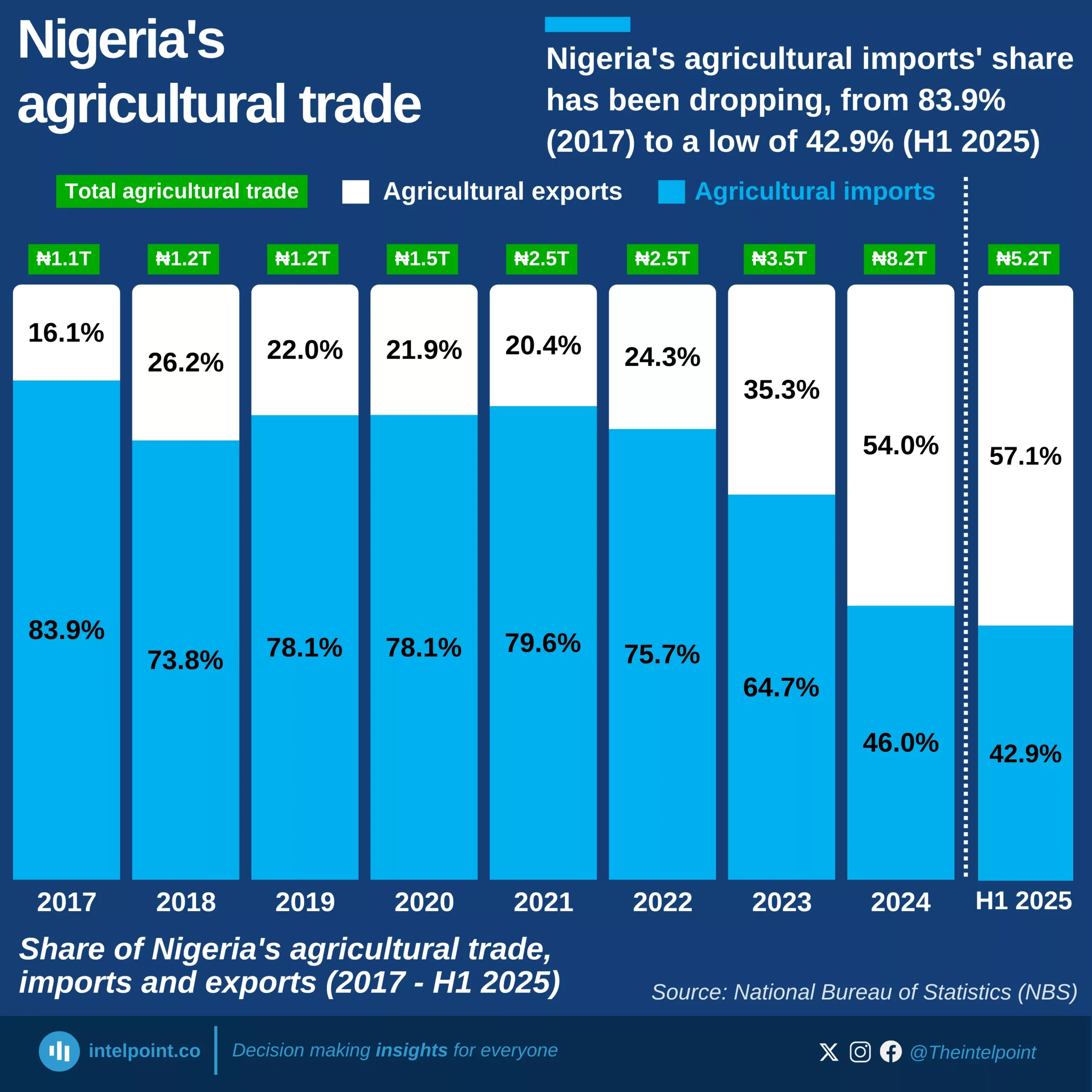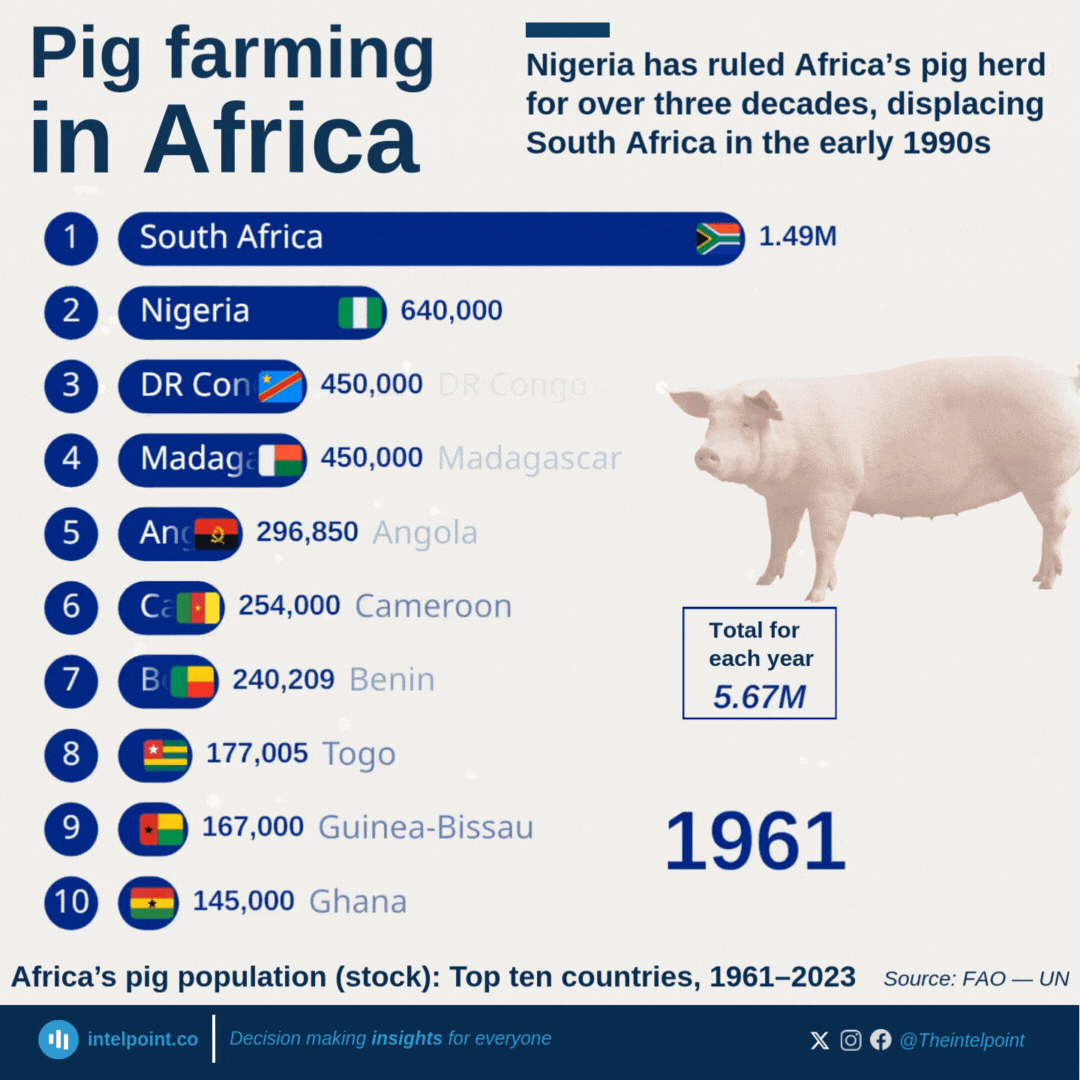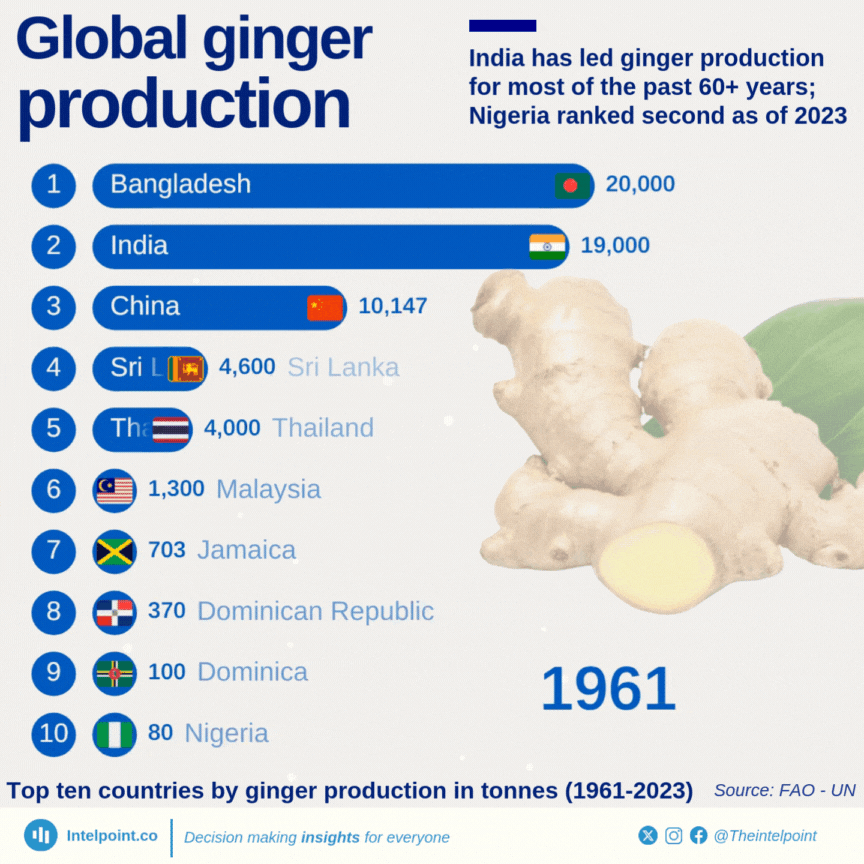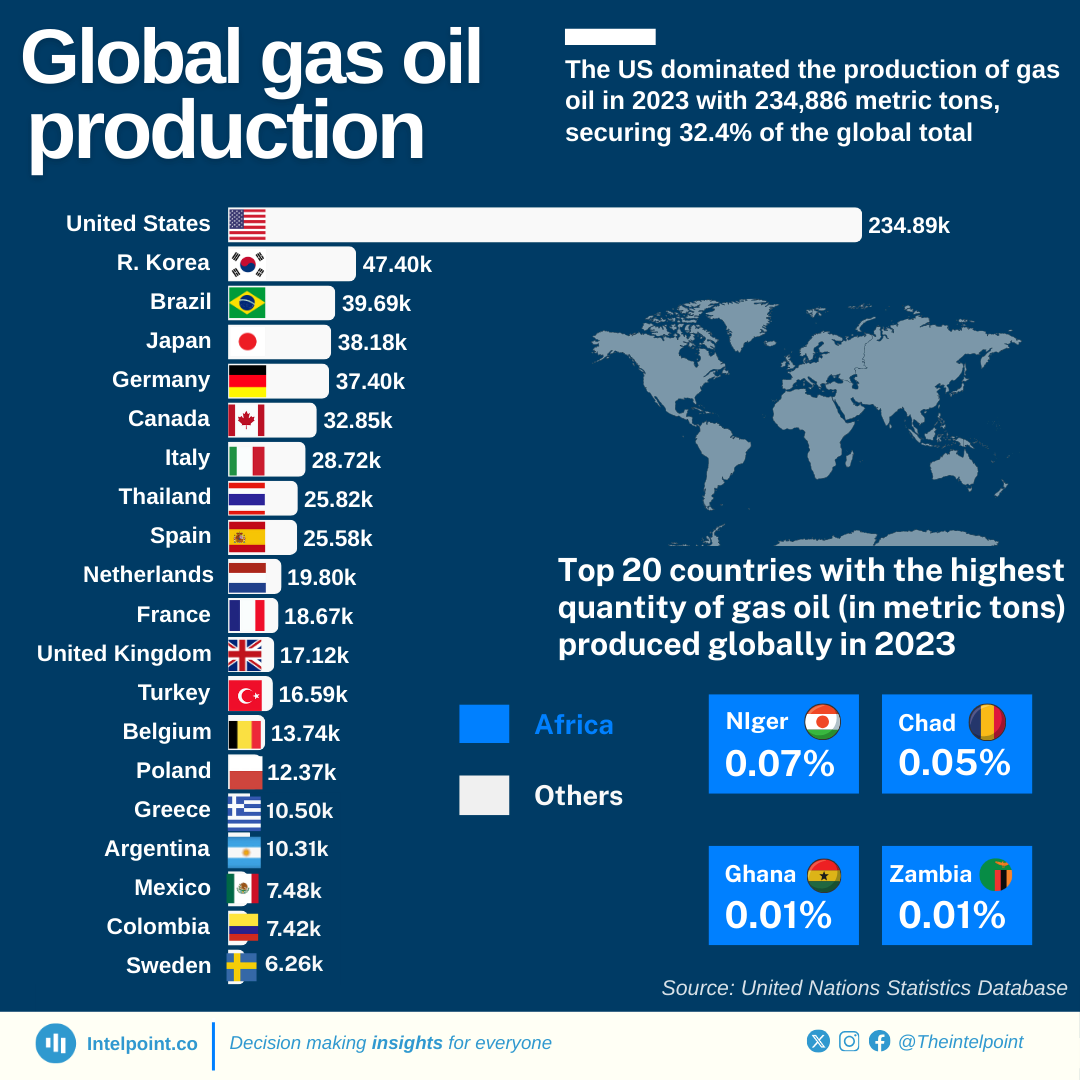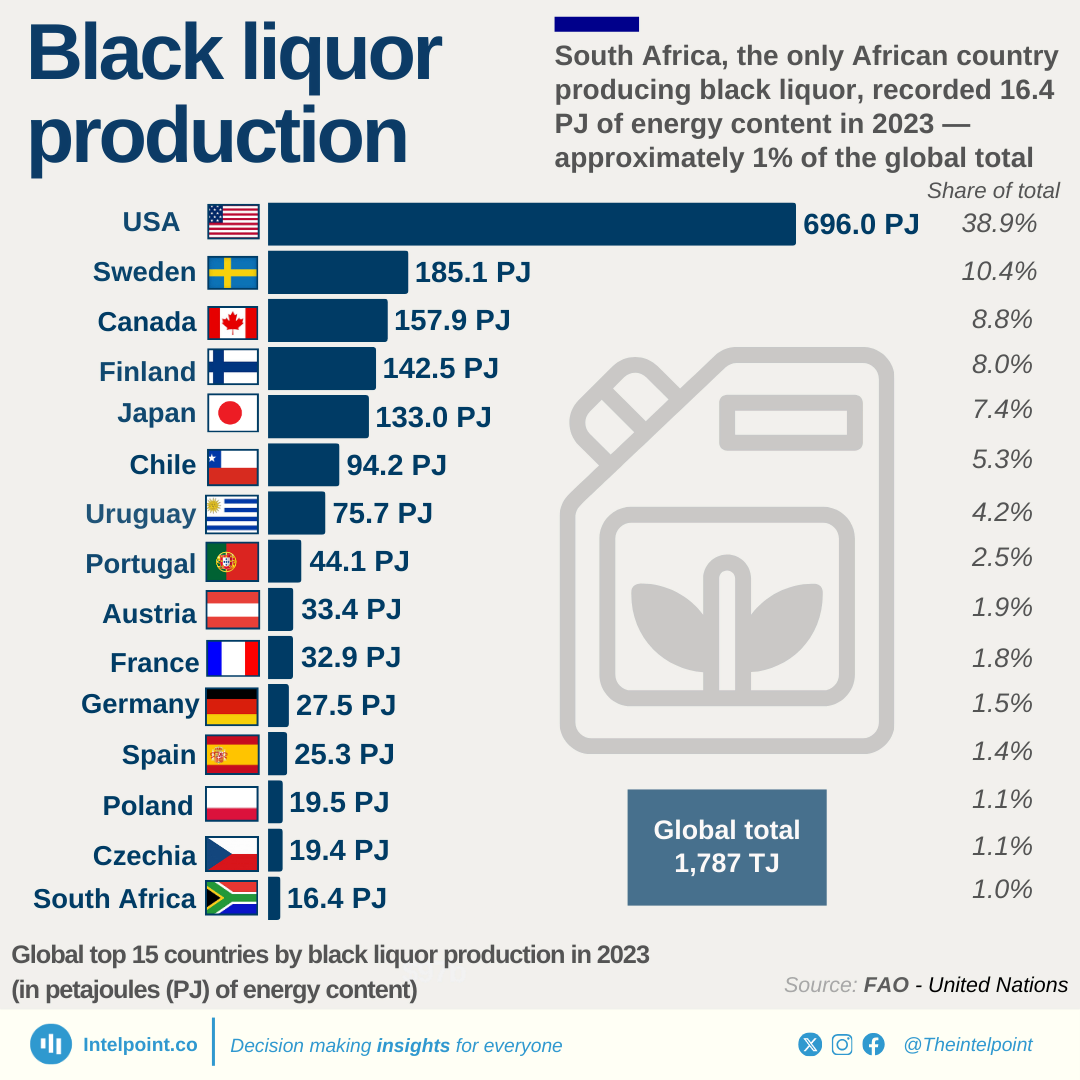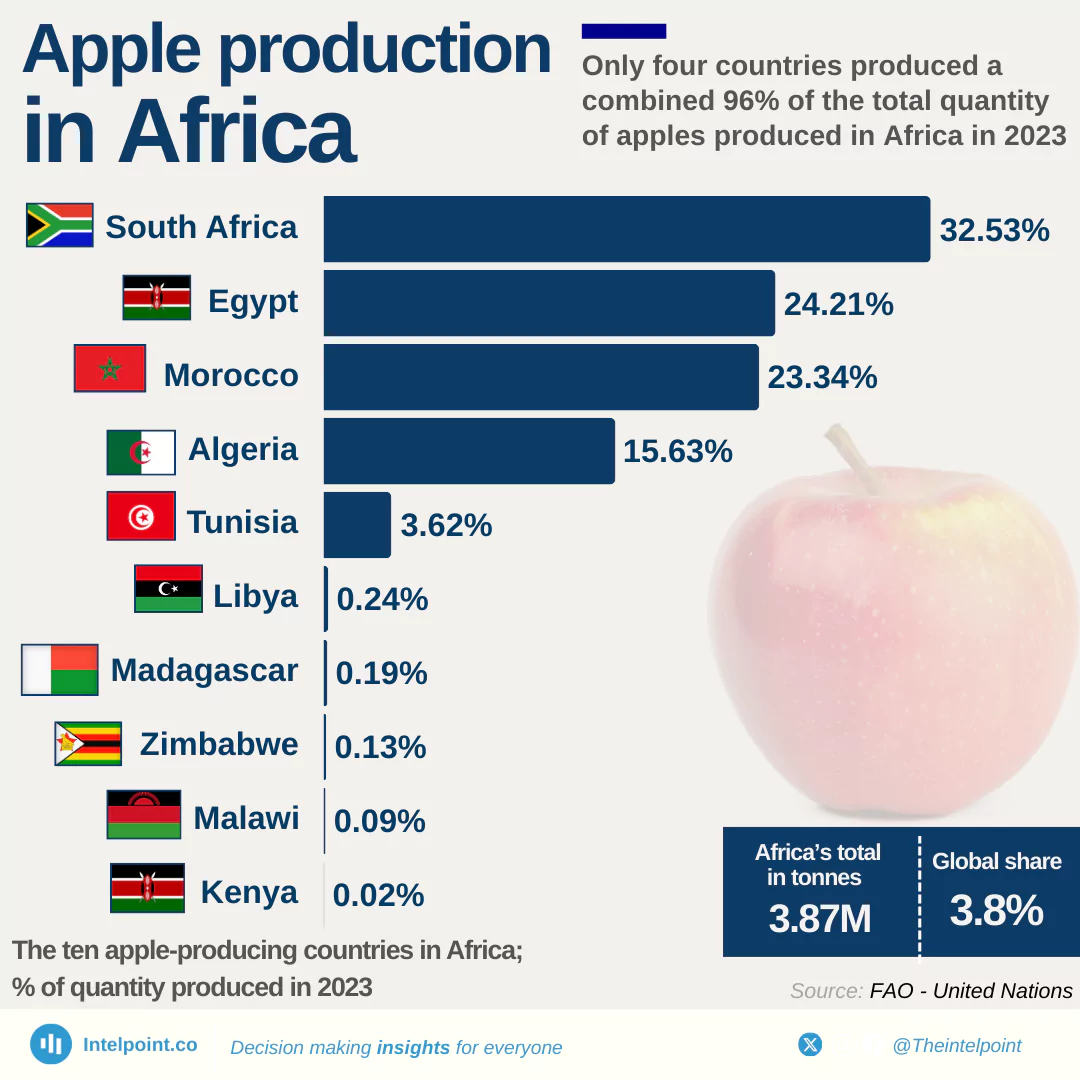In 1961, China produced just 167,000 tonnes of apples, accounting for a mere 1% of global production.
Over the next six decades, this figure surged by 28,300%, reaching 47.5 million tonnes by 2022 and capturing 50% of global production — growing at an average rate of around 7.5% per year.
China's rise began with agricultural reforms in the late 1970s and gained momentum in the 1980s and 1990s.
These are the top ten apple-producing countries over the years.
